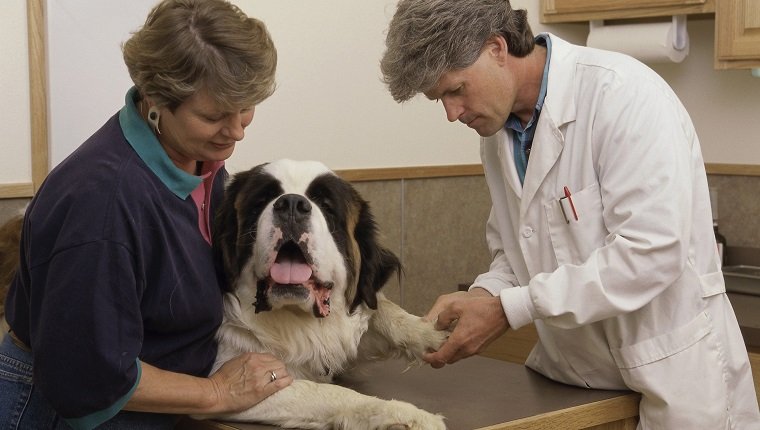Cutaneous vasculitis in dogs is an inflammation of the walls of the blood vessels due to an abnormal immune system response, which causes skin conditions.
The inflammation results from a quick increase of white blood cells, though the cause for that increase is unknown in about half of cases. The other half of cases can be caused by many factors, including allergies, infections, and some forms of cancer.
Usually this condition affects only the skin, but internal organs may also be affected in some cases. If you see the signs in your dog, then you must consult your veterinarian for a proper diagnosis and treatment.
Here’s what you should know about the symptoms, causes, and treatments for cutaneous vasculitis in dogs.
Symptoms Of Cutaneous Vasculitis In Dogs

The symptoms of cutaneous vasculitis in dogs are visible on the skin. These symptoms generally appear on the tips of the ears, the nose, the lips, the tail, the elbows, the inside of the mouth, or on the paws.
If you see the following signs in your dog, then you must contact your vet:
- Red or purple spots
- Crusting of the skin
- Fluid-filled vesicles
- Bruising
- Hair loss
- Black heads
- Pain at the affected site
- Achiness
- Edema (swollen limbs)
- Itchiness
- Ulcers on the skin
- Loss of appetite
- Weight loss
- Fatigue
- Fever
Causes Of Cutaneous Vasculitis In Dogs

The cause of cutaneous vasculitis in dogs is unknown in about half of cases. Vets refer to this as idiopathic cutaneous vasculitis. The main cause of the symptoms is an abnormal immune system response, which can happen due to a number of reasons.
Here are several health issues that can cause immune system abnormalities that lead to this condition:
- Bacterial or viral infections
- Internal cancer
- Reaction to vaccine (often the rabies vaccine)
- Food allergies
- Tick-borne illnesses
Some dog breeds have a higher predisposition to developing cutaneous vasculitis. These include:
- Chinese Shar Peis
- Collies
- Dachshunds
- German Shepherd Dogs
- Greyhounds
- Jack Russell Terriers
- Rottweilers
- Saint Bernards
- Shetland Sheepdogs
Some breeds are also more prone to developing the condition due to a reaction from vaccination, including:
- Maltese Terriers
- Poodles
- Silky Terriers
- Yorkshire Terriers
Treatments For Cutaneous Vasculitis In Dogs

Treatment for cutaneous vasculitis in dogs usually depends on the underlying cause of the condition. For example, if the vet suspects infection, then they may prescribe antibiotics to help fight off the bacteria. If food allergies are the cause, then the vet may prescribe dietary changes.
Most dogs who suffer from cutaneous vasculitis must also take anti-inflammatory drugs and immunosuppressive medications to control the abnormal immune response. The types of medication depend on the severity of the skin condition, as well as whether or not internal organs have been affected.
When vets can’t find or treat the underlying cause of the condition, medication may need to be given for the rest of dogs’ lives.
Has your dog ever suffered from cutaneous vasculitis? How did your vet treat it? Let us know in the comments below!









